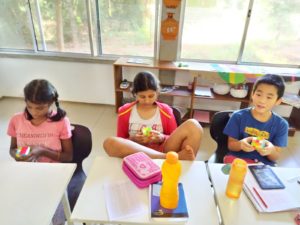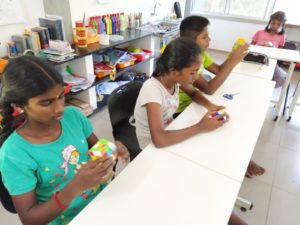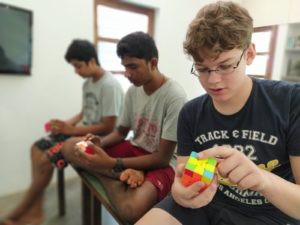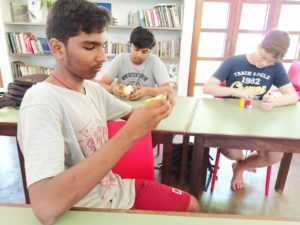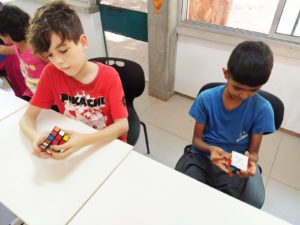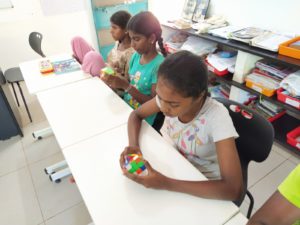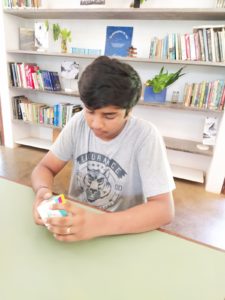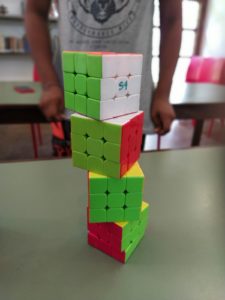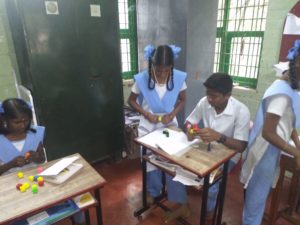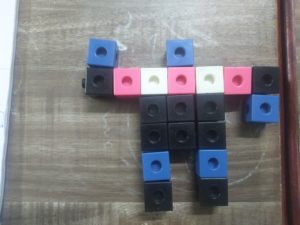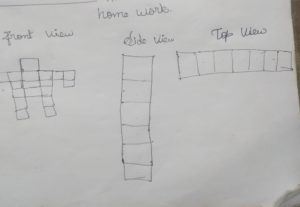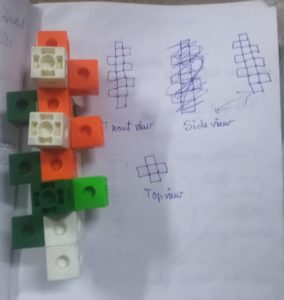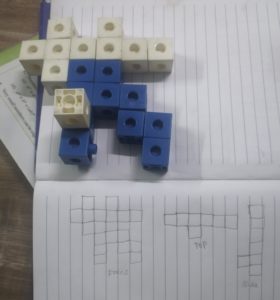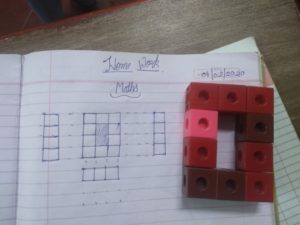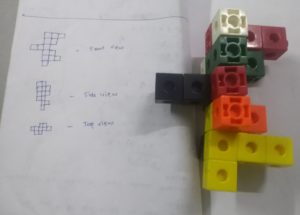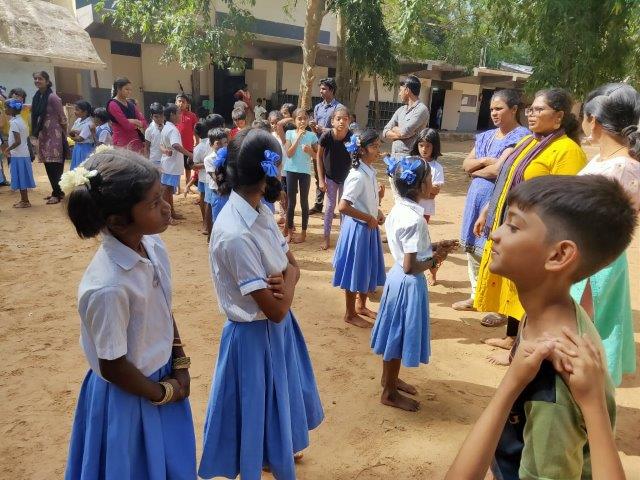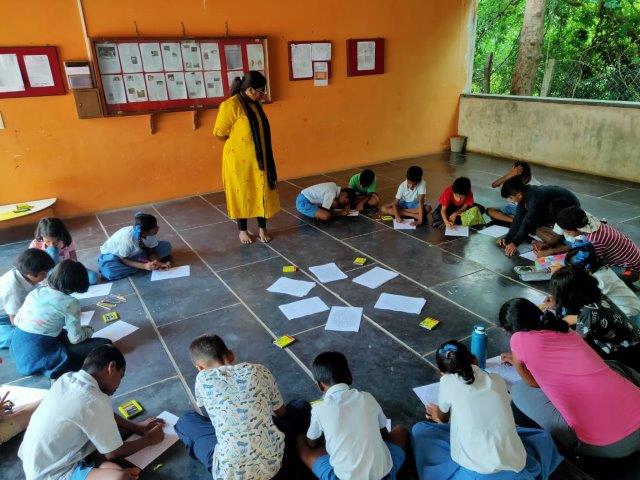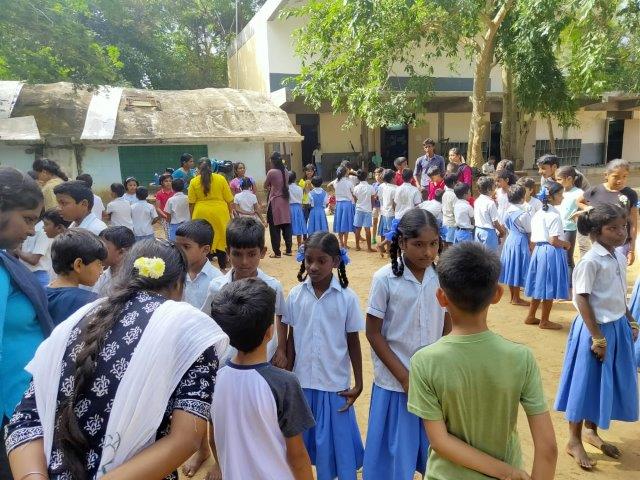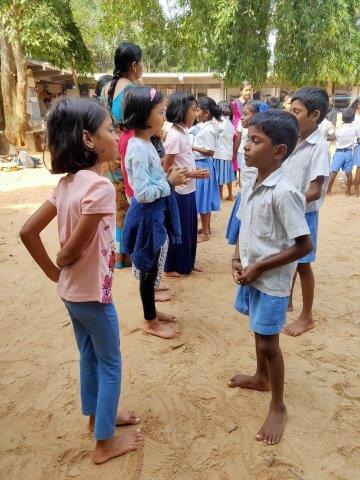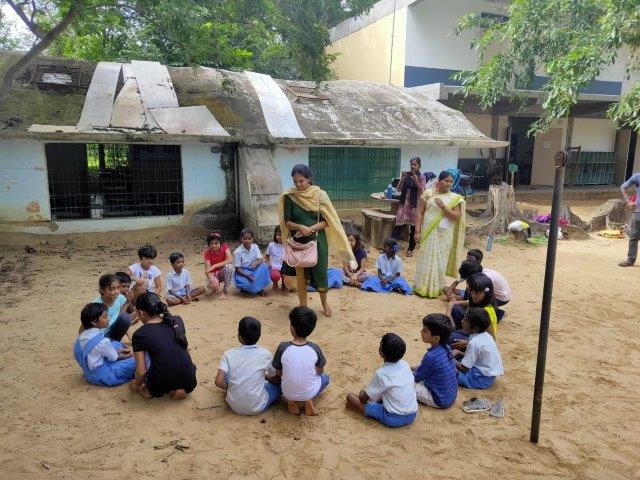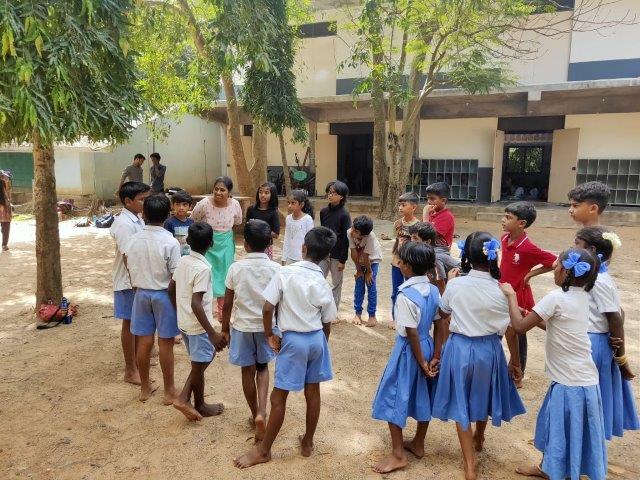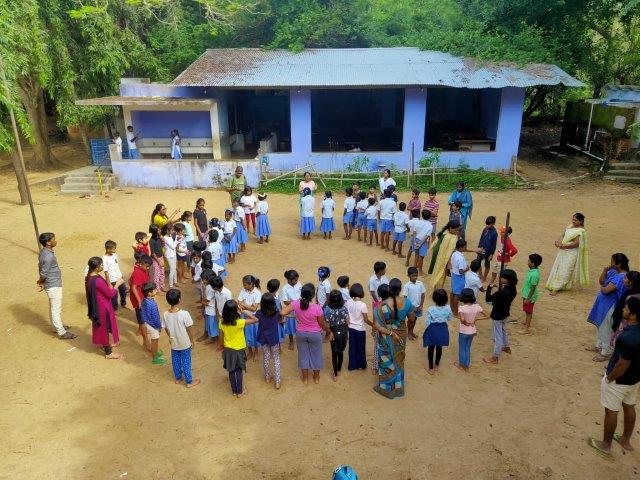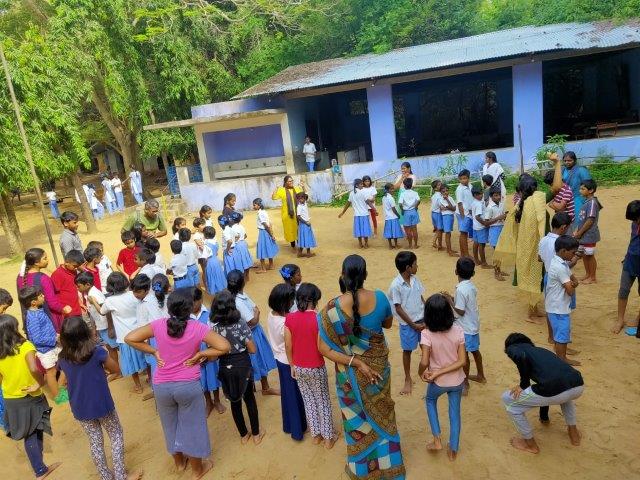We,8th graders at Isai Ambalam school children started a lesson called visualising solid shapes in mathematics. We used sodo cubes to understand different views of a solid shape. Children have been divided into four groups. 20 sodo cubes were given to each group. One child from each group should make a solid shape using 20 cubes and should draw the front view, side view and top view. He has to show this views to his partner without showing the shape.The other person should make the same model by seeing drawings. Children enjoyed this activity. They were able to draw the different views of solid shapes and also make the shapes by seeing the views. But the question they had was how to draw the views if the model has holes. Then they came to the conclusion of using dotted lines to represent the holes.
Multiplication
~Saranya, Sundar and Madhavan
Here we have created project on multiplication using graph in scratch. It helps children to understand double digit number multiplication by looking at this program.
In that project violet is Hundred’s Green is Ten’s and Red is One’s.
Lines and Lines
~Saranya
2nd Grade at Isai Ambalam we were working on different types of lines. Children learnt standing line, slanting line, sleeping line and curved line. We split children into 4 groups and I gave 1 task to each group. Each group built different shapes example alphabetic’s, house and toys with some constrain, which is 1. they should use all the 4 lines. 2. specific constrain 2-standing line, 3 slanting line, 6 sleeping line and 1 curved line etc…
Children did creatively they had done the lines task. Each group built different shapes and they worked together. I was able to see team work ex: one child drawing before pasting the stick on the paper another child giving idea to put things around and in, another child cutting the sticks with needed size.
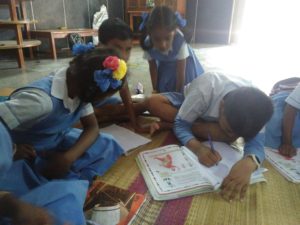
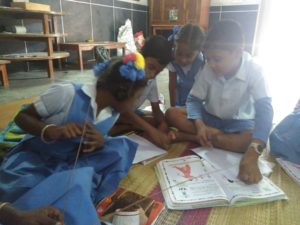
Session on Brain with Inspiration Team(React, Respond, Realise)
~ Vimal, Abilash, Ranjith
An interactive session on the concepts React, Respond & Realise was held with kids to understand the various types of brain parts associated with these emotional reactions. Kids learnt about the types of brain and various functions these brain will do in our normal day to day life. Also they were able to relate these concepts with the story we have taken up(Maharaj Parikshith). All the kids are asked to draw the types of brain on their hand and on paper for better understanding.The kids came up with a lot of question on the topic, which were brainstormed and understood by all the kids. Every kid shared their learning from the session.
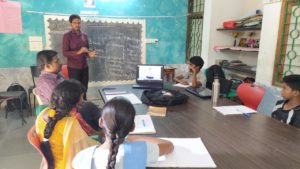
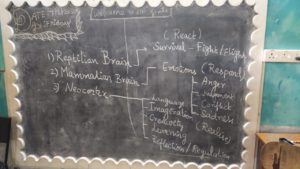
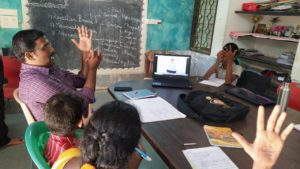
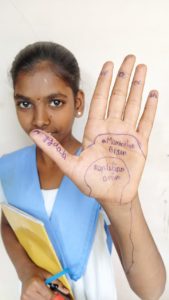
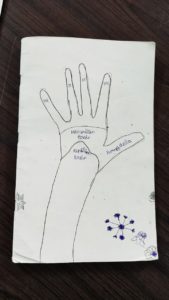
Project:Electromagnet
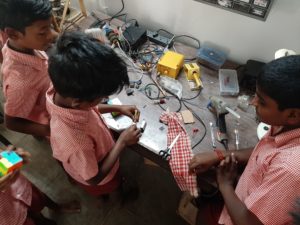
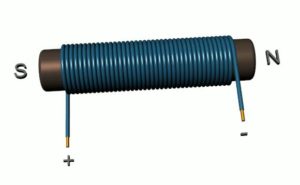
~ R.Sivaraman and B.Saranya
This was a project about the electromagnet and the working of the electromagnetic field .To explain how the electric field is getting converted to electromagnetic field while given current flows through the copper wire.The project was done with the 7th grade students(Udavi) .
Flask Project
~Sandhiya
In the quilt dashboard, we used the flask language. I have created the sample project to learn the flask, Django and sqlalchemy .
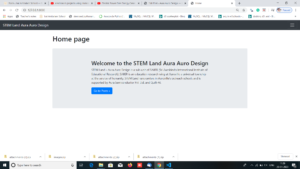
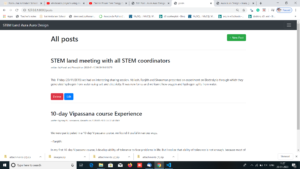
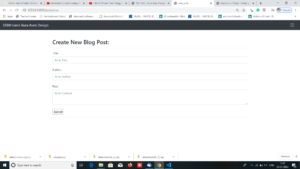
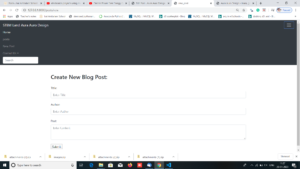
Postman:
I used a postman to insert the data into the database. I also attached the link.
What is Postman?
Postman is currently one of the most popular tools used in API testing. It started in 2012 as a side project by Abhinav Asthana to simplify API workflow in testing and development. API stands for Application Programming Interface which allows software applications to communicate with each other via API calls.
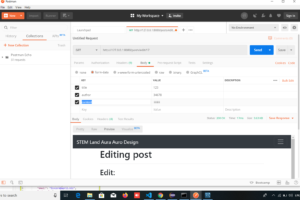
STEM land meeting
~Poovizhi, Abilash
Yesterday we had STEM land meeting with all the coordinators of different STEM land and STEM land math teachers. Sundar presented a scratch program for fraction. Later we were all given small booklets by Azim Premji University on each topic like Addition, subtraction, multiplication, measurement. It had different activities that could be done with children in learning the concept. We agreed to read the booklet and present what we learnt from it make a model of it and present it to others in the next session. For some time we all read our booklet in silence and took notes.
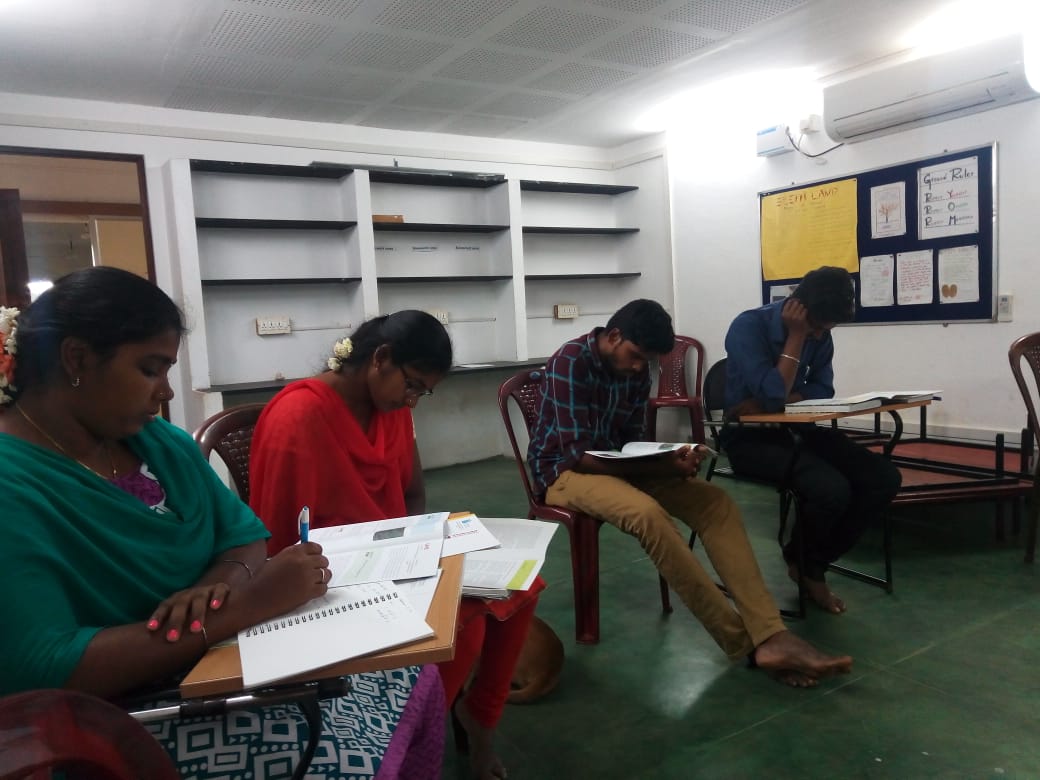
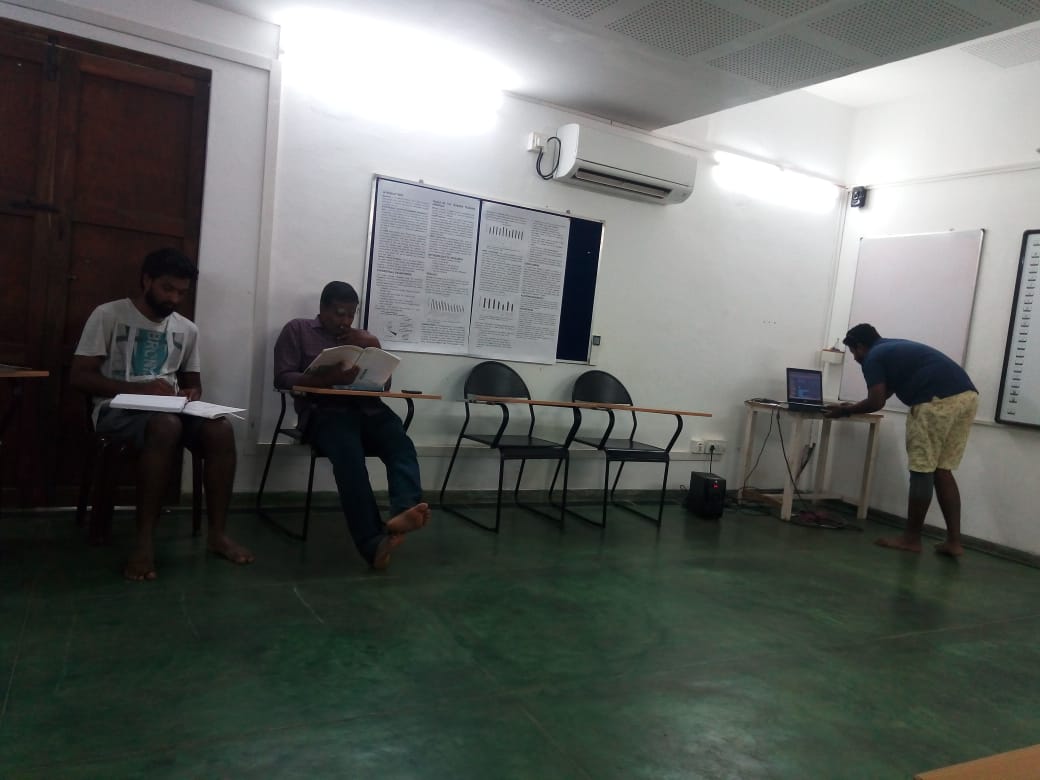
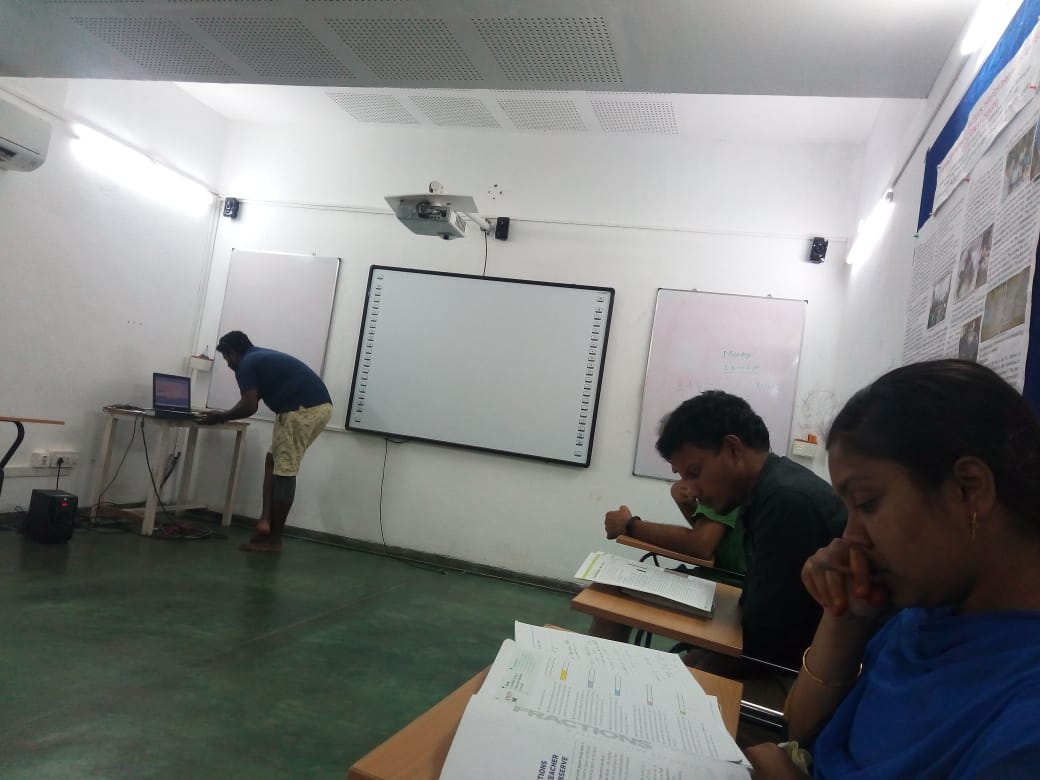
Then shared about cyclic number which he read from his book which was new and interesting for all of us. The cyclic number is the following
1/7 = 0.142857
142857 x 2 = 285714
142857 x 3 = 428571
142857 x 4 = 571428
142857 x 5 = 714285
142857 x 6 = 857142
142857 x 7 = 999999
And the other one was to find the pattern and come up with an equation
1 = 1
3+5 = 8
7+9+11 = 27
What is the pattern and will the next line be?
1 = 1 : 1^3
3+5 = 8 : 2^3
7+9+11 = 27 : 3^3
13+ 15+17+19 = 64 : 4^3
n(n-1)+1 is the equation
Solving 4×4 Rubik’s cube
~Saranya, Arun
Most of the children who come to STEMland can solve 3×3 Rubik’s cube.
What’s next??
We now have bought 4×4 Rubik’s cube and this made a few of the students curious. Now 3 children from class 7, 8 and 9 can solve 4×4 cube. This only took them for about 3 weeks to figure out how to solve it.
Following is a video of a child (padmanaban) from 7th grade solving 4×4 cube. He solved it under 2 minutes.
Creative school visit
~Arun, Pratap
Teachers and children from Creative school Bangalore visited Auroville mid-December 2019.
Some of our STEMland teachers had already visited this school last year for a Learning network conference (refer to our previous blog)
As part of their visit, they also visited Isaiambalam school. Children first introduced their names and different favorites like color, food animals, etc. It was fun for the children. Then children were divided into separate groups led by teachers of Creative school. Children did different activities like drawing, movements, etc.
Rubik’s Cube
~ Abilash.S
Solving Rubik’s cube has always been a challenge for me, and I was never interested in solving it. But few weeks ago I got the opportunity to learn the cube. Though initially I didn’t know how to solve it, I was able to learn to solve the cube after spending 4 to 5 hours. I was asked to take Rubik’s cube classes for the 6th graders in Udavi School, so every Thursdays , I spend 40 minutes taking class for them during my lunch break.
The students of Deepanam and Last School were also interested in learning the Rubik’s cube, so a class was taken for them to solve it. During the session I was able to notice that the students were really patient, focused while solving the cube and were also helping each other, this made me feel accomplished and acknowledged.
